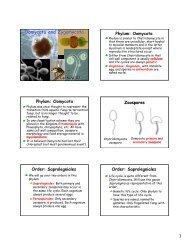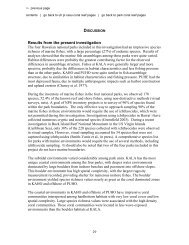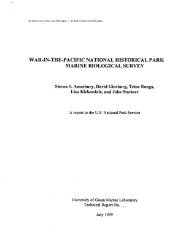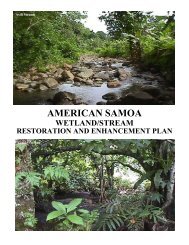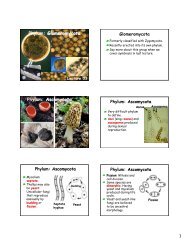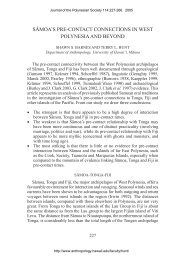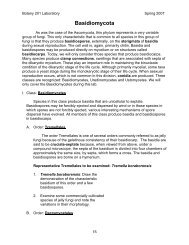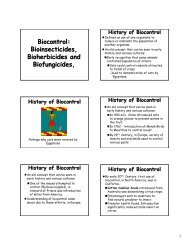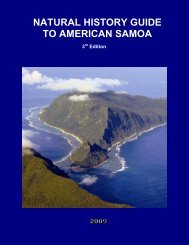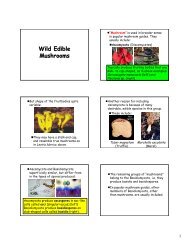distribution, status, and conservation of bats in the fiji islands
distribution, status, and conservation of bats in the fiji islands
distribution, status, and conservation of bats in the fiji islands
You also want an ePaper? Increase the reach of your titles
YUMPU automatically turns print PDFs into web optimized ePapers that Google loves.
Nayau - Lau<br />
17º 59.38' S, 179º 3.84' W<br />
Nayau - Lau<br />
site: Liku - Qara ni Cava<br />
17º 59.56' S, 179º 3.57' W<br />
Nayau - Lau<br />
site: Liku - Navutu cave<br />
17º 58.95' S, 179º 3.8' W<br />
Nayau - Lau<br />
site: Liku -<br />
17º 58.95' S, 179º 3.8' W<br />
Nayau - Lau<br />
site: Narocivo -<br />
17º 57.89' S, 179º 2.57' W<br />
Nayau - Lau<br />
site: Narocivo - Qalulu cave<br />
17º 58.35' S, 179º 2.56' W<br />
Nayau - Lau<br />
site: Narocivo - Qara ni Beka Beka<br />
17º 57.89' S, 179º 2.94' W<br />
Pteropus<br />
samoensis<br />
17-Jan-2001<br />
The village <strong>of</strong> Liku is s<strong>and</strong>wiched<br />
between <strong>the</strong> ocean <strong>and</strong> a large<br />
forest clad cliff.<br />
No <strong>bats</strong> 17-Jan-2001 Cave with a s<strong>in</strong>gle chamber, 30m x<br />
20m by 1-2m high. Two open<strong>in</strong>gs,<br />
one large <strong>and</strong> one small. Located<br />
near <strong>the</strong> beach, near coconut graves<br />
<strong>and</strong> forest.<br />
No <strong>bats</strong> 17-Jan-2001 Limestone cave with several<br />
chambers at multiple levels. The<br />
first chamber was 10m x 10m by<br />
3m high, <strong>and</strong> <strong>the</strong> lower rooms<br />
somewhat smaller. We explored 3<br />
chambers but had to stop due to<br />
lack <strong>of</strong> suitable equipment.<br />
Entrance about 2m x 2m. Located<br />
<strong>in</strong> an open agricultural area on <strong>the</strong><br />
isl<strong>and</strong> plateau.<br />
No <strong>bats</strong> 17-Jan-2001 Small cave just 4m x 4m by 3m<br />
high. Just about 10m from Natutu<br />
cave. Also located <strong>in</strong> an open<br />
agricultural area.<br />
Pteropus<br />
samoensis<br />
16-Jan-2001<br />
Near <strong>the</strong> village <strong>the</strong>re are many<br />
gardens <strong>and</strong> coconut graves, but to<br />
<strong>the</strong> <strong>in</strong>terior <strong>the</strong> large cliffs are<br />
covered with good forest.<br />
No <strong>bats</strong> 16-Jan-2001 Limestone with a couple <strong>of</strong> large<br />
rooms with a total <strong>of</strong> a few dozen<br />
meters. At <strong>the</strong> base <strong>of</strong> a cliff.<br />
No <strong>bats</strong> 16-Jan-2001 Very large limestone rock<br />
overhang, 20m wide, 15m deep, 8m<br />
high, on <strong>the</strong> cliff, overlook<strong>in</strong>g a<br />
forested area..<br />
The chief <strong>of</strong> Liku says that P. samoensis is quite common. He knows it by<br />
Beka lulu <strong>and</strong> Beka dravu. He believes that E. semicaudata is decl<strong>in</strong><strong>in</strong>g.<br />
Nei<strong>the</strong>r <strong>bats</strong> nor swiftlets, although <strong>the</strong> locals said that <strong>the</strong>y had seen <strong>bats</strong><br />
<strong>the</strong>re <strong>in</strong> <strong>the</strong> past. The cave is used as a hurricane shelter but <strong>the</strong> last time<br />
that people had found refuge <strong>the</strong>re was apparently <strong>in</strong> 1979.<br />
No <strong>bats</strong> or swiftlets were found, although villagers said it used to be<br />
occupied by <strong>bats</strong>. The entrance was completely blocked by vegetation. The<br />
cave seems to dra<strong>in</strong> part <strong>of</strong> <strong>the</strong> plateau dur<strong>in</strong>g strong ra<strong>in</strong>s.<br />
No <strong>bats</strong> or swiftlets found. Most <strong>of</strong> <strong>the</strong> cave entrance was blocked by<br />
vegetation.<br />
Some people say that P. samoensis <strong>in</strong>habits <strong>the</strong>ir side <strong>of</strong> <strong>the</strong> isl<strong>and</strong>. They<br />
say that it is not rare, but less abundant than P. tonganus.<br />
There were no <strong>bats</strong>, although <strong>the</strong> people <strong>in</strong> <strong>the</strong> village had seen <strong>bats</strong> <strong>the</strong>re.<br />
Although we did not see any <strong>bats</strong> several <strong>the</strong> locals that accompanied us had<br />
seen <strong>bats</strong> <strong>in</strong> <strong>the</strong> cave before.<br />
58



